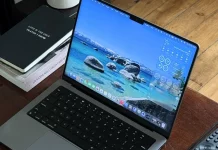The launch of Apple’s iPhone 17 series has stirred plenty of excitement among tech enthusiasts—and for good reason. On the software front, the latest iOS introduces an entirely new design language called Liquid Glass, which gives the interface a fluid, almost organic look. Apple has also refreshed several key features across the Home and Lock Screens, Files app, Phone, Messages, and the new Camera Control button, enhancing both customization and productivity.
On the hardware side, Apple has made several meaningful upgrades. The iPhone 17 runs on the new six-core A19 chip, promising efficient performance throughout the day. The front-facing camera now supports Center Stage, keeping you perfectly framed during selfies and video calls, while the 6.3-inch Super Retina XDR display gets a much-welcomed 120Hz adaptive refresh rate—something missing from the iPhone 16.
iPhone 17 battery life vs. competitors
While the software and performance upgrades stand out, battery life remains one of the most talked-about aspects. According to Apple’s specifications, the iPhone 17 delivers over 24 hours of video playback. However, when compared to other leading smartphones, those numbers don’t quite hold up.
Reports indicate that the iPhone 17 houses a 3,692 mAh battery—smaller than most competitors. The Galaxy S25 sports a 4,000 mAh cell, the Pixel 10 pushes 4,970 mAh, the OnePlus 13 packs a massive 6,000 mAh, the Nothing Phone (3) offers 5,150 mAh, and the Xiaomi 15 includes 5,240 mAh.
In testing, Apple’s official estimate reaches up to 30 hours of offline video playback or 27 hours of streaming with Bluetooth headphones. Real-world performance, however, varies. PhoneArena measured just over six hours of active use, YouTuber Techmo reported 7 hours and 41 minutes, and SimplyPops recorded around 13 hours. Here’s how other flagships compare in
similar tests:
- Galaxy S25: 29 hours officially; about 7 hours (PhoneArena) to 7:25 (Techmo).
- Pixel 10: 24+ hours officially; 7:16 (PhoneArena) and 8:11 (Techmo).
- OnePlus 13: No official figure; 7:30 (PhoneArena) and 10:02 (TechNick).
- Nothing Phone (3): No official figure; 6:45 (PhoneArena) and 9:34 (TechNick).
- Xiaomi 15: 25 hours officially; 7:18 (PhoneArena) and 7:58 (Techmo).
Overall, the iPhone 17 trails slightly behind most of its Android rivals in endurance, though its standby performance and efficiency optimization remain strong points.
iPhone 17 charging time vs. competitors
Charging speed is another area where Apple continues to take a different approach. The iPhone 17 supports up to 40W fast charging via USB-C, reaching 50% in about 20 minutes—or in 30 minutes when using a MagSafe Charger with a 30W adapter. In full tests by PhoneArena, the device reached a complete charge in roughly 1 hour and 16 minutes. Here’s how that compares:
- Galaxy S25: 54% in 30 minutes, 100% in 1h22 (25W charger).
- Pixel 10: 50% in 30 minutes, 100% in 1h29 (30W charger).
- OnePlus 13: 100% in 43 minutes (100W wired), or 1h29 (50W wireless).
- Nothing Phone (3): 62% in 30 minutes, 100% in ~1h01 (65W charger).
- Xiaomi 15: 75% in 30 minutes, 100% in 50 minutes (90W charger).
Though Apple’s results are not the fastest in the flagship segment, they’re consistent and safe for long-term battery health. Users looking for quicker charges can enable Low Power Mode to reduce background activity or keep the device at moderate temperatures to optimize charging efficiency.





